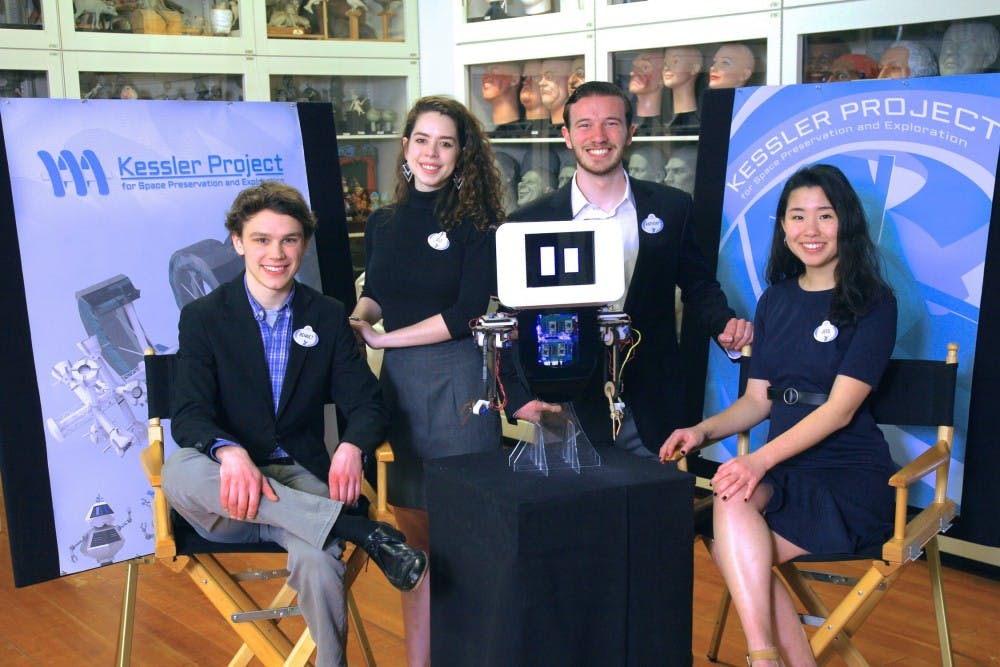A team of four Penn students presented their ideas to Disney executives as finalists in Disney's 2018 Imaginations design competition last week.
Disney Imagineering, the research and development division at Disney responsible for creating the company's worldwide parks and attractions, sponsors the annual Imaginations competition which culminates in California. Teams of college students and recent college graduates nationwide complete a project challenge in only a few weeks to compete in the contest. The process mimics a realistic workflow for Disney Imagineers when they're developing company projects.
This year, the challenge was to locate an “actual, abandoned ‘ghost-town’ from anywhere in the world and revitalize it” in a way that would appeal to the masses.
Penn's team, comprised of Engineering juniors Jess Peng, Liz Reckart, Anthony Nardone, and Bennet Caraher, settled on what they called the Kessler Project — a space adventure that takes place in abandoned space landmarks, like the International Space Station and China’s Tiangong-1.
Their idea landed them a spot among six finalists in the competition this year, and on Jan. 21 they flew to Imagineering headquarters in Glendale, Calif. to present to a panel of Imagineer judges.
Peng said the Kessler Project aimed to get people excited about space exploration and its history by taking users into space on a rocket ship.
“What we wanted to do was provide a really immersive experience in traveling through space and being able to appreciate a lot of those historical places that are now forgotten or just haven’t been visited by astronauts,” she said.
The team proposed an inter-orbital museum based in the now-unused Tiangong-1, which was China’s space station prototype and orbital laboratory. Their submission also incorporated spaceships which could transport guests from the Tiangong-1 to other abandoned space landmarks among the clouds of debris orbiting Earth.
Teams were asked to evaluate the environmental, social, and cultural impact that their proposal might have on the communities involved. Peng said the team chose to call attention to potential issues facing space travel.
“We wanted to bring awareness to something called Kessler syndrome, which basically describes how space debris multiplies due to collisions with abandoned satellites in space,” she said. The team hoped that their imagined inter-orbital museum would raise public awareness of the issue and help to reduce the amount of space debris in orbit, which could make space exploration nonviable in the future.
Clearly, the Imaginations proposals were not expected to be immediately practicable: The winning team, from Savannah College of Art and Design, proposed an underwater exploration center of sunken, 17th-century ruins in Port Royal, Jamaica, according to a press release from Disney.
Though the Kessler Project did not ultimately place among the top three Imaginations proposals, the Penn engineers felt their experiences were invaluable.
Reckart said that she was the happiest about having met fellow finalists and current Imagineers.
“A lot of it was networking and learning about what Imagineering is and seeing what the people do and it was just a really great learning experience,” Reckart said.
The team also met “alumni” from the Imaginations competition who now work at Imagineering. Disney promotes the competition as an avenue for “seeking out and nurturing the next generation of diverse Imagineers,” according to their website.
Peng said she appreciated seeing a diversity of roles and backgrounds among Imagineers. "They were all incredibly talented," she said. "We were blown away.”



